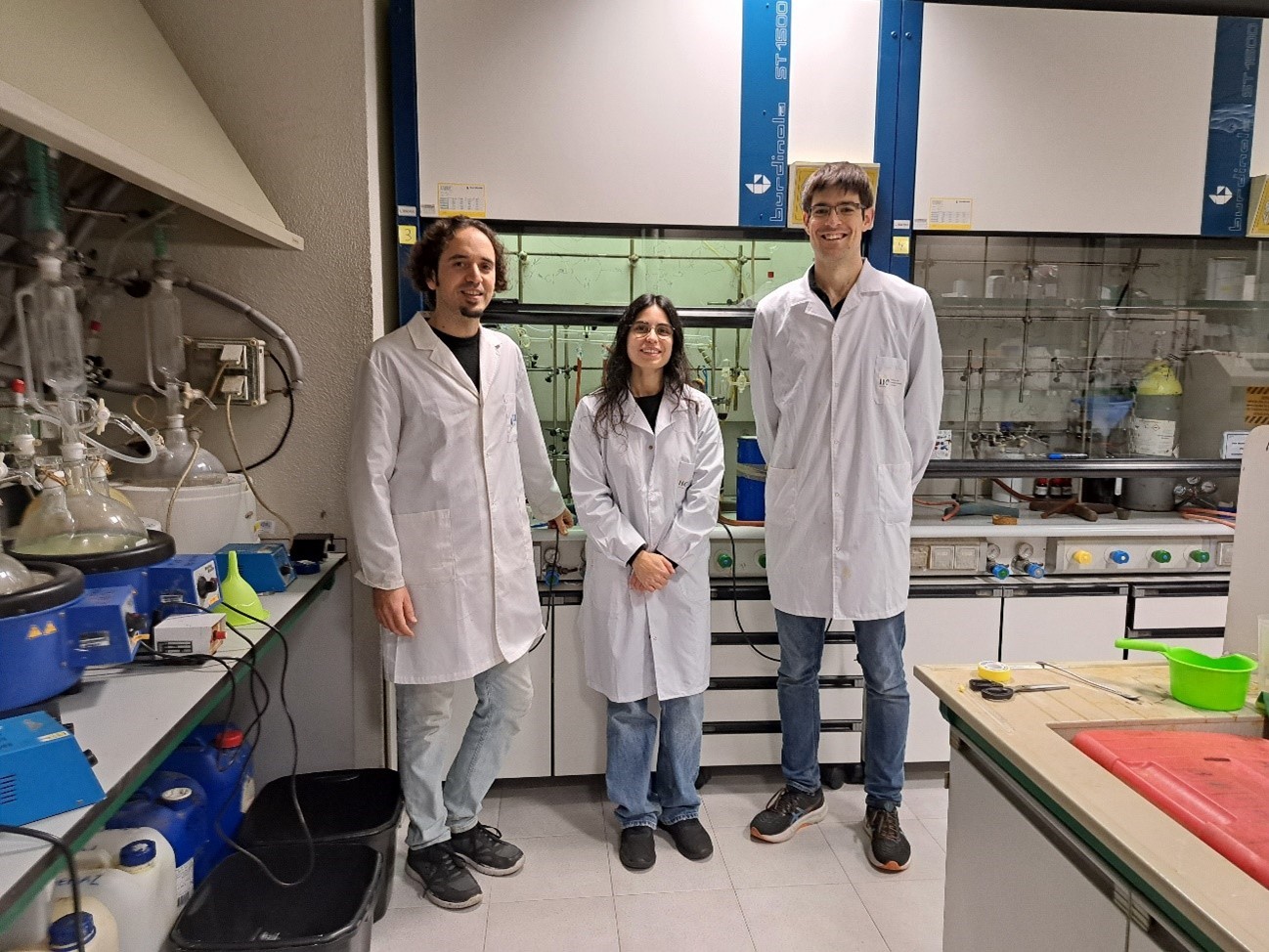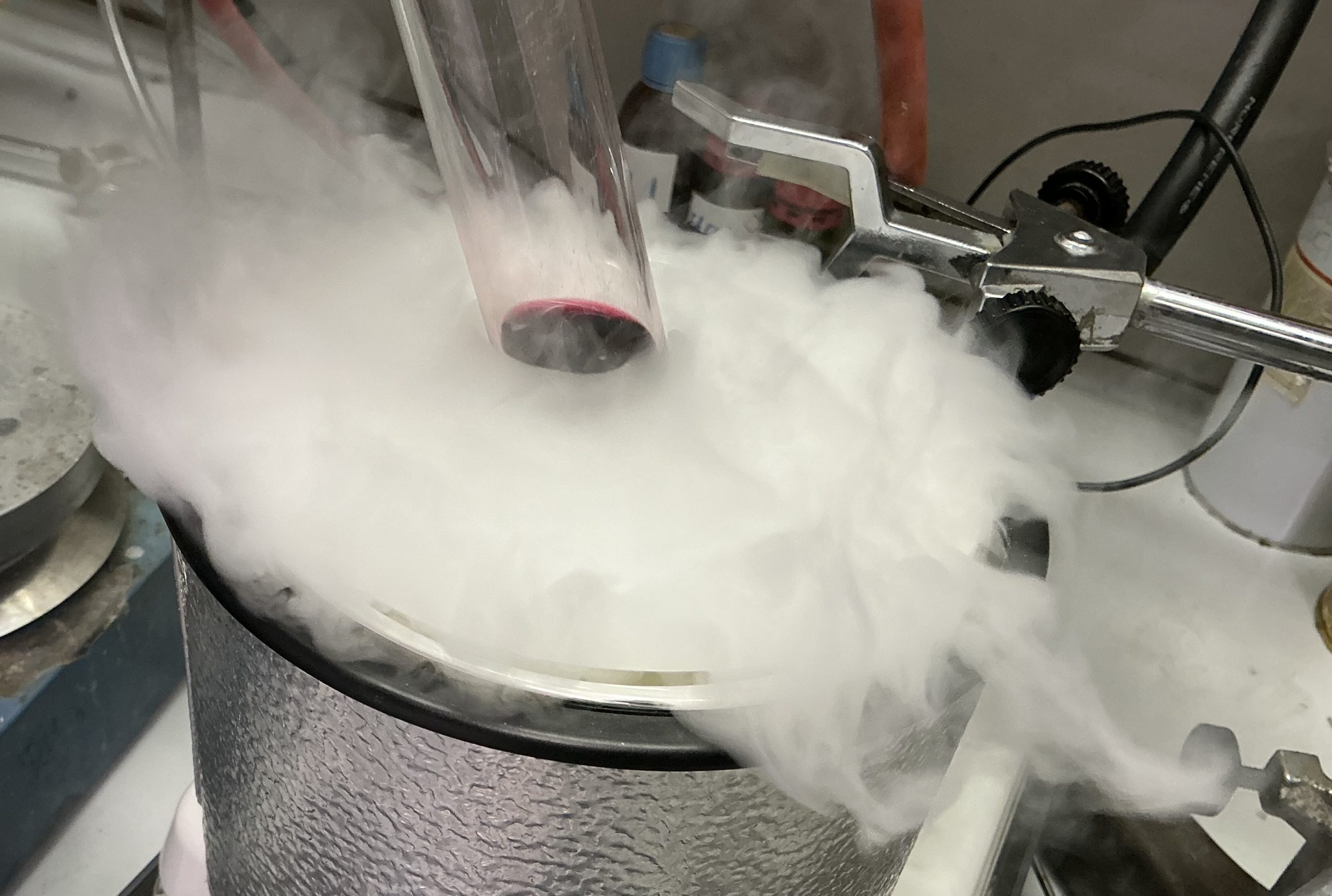Seville, January 21, 2025. Researchers from the Institute of Chemical Research (IIQ), located at the Research Center, Isla de la Cartuja (cicCartuja) have demonstrated the viability of precious metal radical catalysts, until now considered too unstable for industrial use. The work, published in Nature Chemistry, opens the door to the design of more efficient catalysts and a more sustainable use of precious metals in the chemical industry.
The researchers have created a new iridium catalyst whose radical configuration (also called open-shell) has proven to be twenty times more active than its conventional counterpart. The process chosen for the test was an olefin isomerization reaction, a widely studied transformation for which iridium’s capacity as a catalyst was already known.
However, what is important is not the reaction used or the rate of effectiveness, but that for the first time the viability and superiority of these radical configurations have been demonstrated. Although common in other types of metals, in the case of precious metals they were considered too unstable for use.
“Our method shows that precious metal radical catalysts are not only possible, but that they have a very promising future in the design of more efficient and economical catalysts,” summarizes Jesús Campos, lead author of the work and CSIC researcher at the IIQ (CSIC center in Seville where all the experimental work was carried out).
Computational studies carried out in collaboration with the Complutense University of Madrid revealed that the catalytic cycle of isomerization was identical in both cases (radical and conventional catalyst), but that the radical structure significantly reduced the energy barriers of the critical steps.
“These findings could reduce the costs of key industrial processes, especially in the area of fine chemicals, where the use of these metals is predominant,” Campos continues. “It represents a new paradigm in precious metal-based catalysis,” he adds.
In fact, the group has opened a new line of research to explore these radical systems not only with iridium, but with other precious metals such as palladium, platinum or rhodium. “We also want to explore the use of radical systems in more complex processes and check whether they allow reactions that are not possible with conventional configurations,” the researcher explains.
Radical versus conventional catalysts
Precious metal catalysts are molecular compounds created in the laboratory from the union of a transition metal (those found in the centre of the periodic table) and an organic molecule, which is what gives it and modulates its catalytic properties.
The study now published has shown that, in precious metals, as with other metals, radical or open-shell electronic structures are more efficient than conventional closed-shell ones.
This is due to the greater chemical complexity of radical configurations: “Conventional catalysts provide alternative routes for chemical reactions; routes that involve lower energies and are therefore faster,” explains Campos. “Radical metal catalysts not only provide these alternative routes, but the existence of open electronic layers in their structure leads to additional interactions that further reduce the energy required.”
These open layers make radical catalysts more effective, but also more unstable and difficult to control. In fact, some molecules with iridium radical configurations had already been created, but none of them were stable enough to be active in catalysis. “The key to our development has been the choice of the organic part of the compound, which surrounds the metal, favouring continuous electronic communication along the catalyst and thus stabilising the configuration,” explains Campos.

From left to right: Jesús Campos, Alejandra Pita and Juan José Moreno, from IIQ
Precious metals, a rare commodity
Precious metal catalysts are mainly used in fine chemical processes; that is, those intended for the production of complex and relatively pure molecules used in agro-food compounds, active ingredients in medicines or biocides.
These precious metals (iridium, platinum, rhodium… but also gold and silver) are among the scarcest elements on the planet, with concentrations in the earth’s crust of barely one part per million.
The quantity of metal used in the reactions is not very high and, in addition, the catalysts are not consumed during the chemical reactions (although they can be rendered useless). Even so, the availability of these materials is limited and their scarcity is reflected in their cost. In this context, the development of more efficient alternatives that allow the use of a smaller quantity of metal is a priority for the industry.
Reference
Alejandra Pita Milleiro, Nereida Hidalgo, Juan J. Moreno, Israel Fernández, Jesús Campos. An Open-Shell Ir(II)/Ir(IV) Redox Couple Outperforms an Ir(I)/Ir(III) Pair in Olefin Isomerization. Nature Chemistry. DOI: 10.1038/s41557-024-01722-7
It can be read online at https://www.nature.com/articles/s41557-024-01722-7



